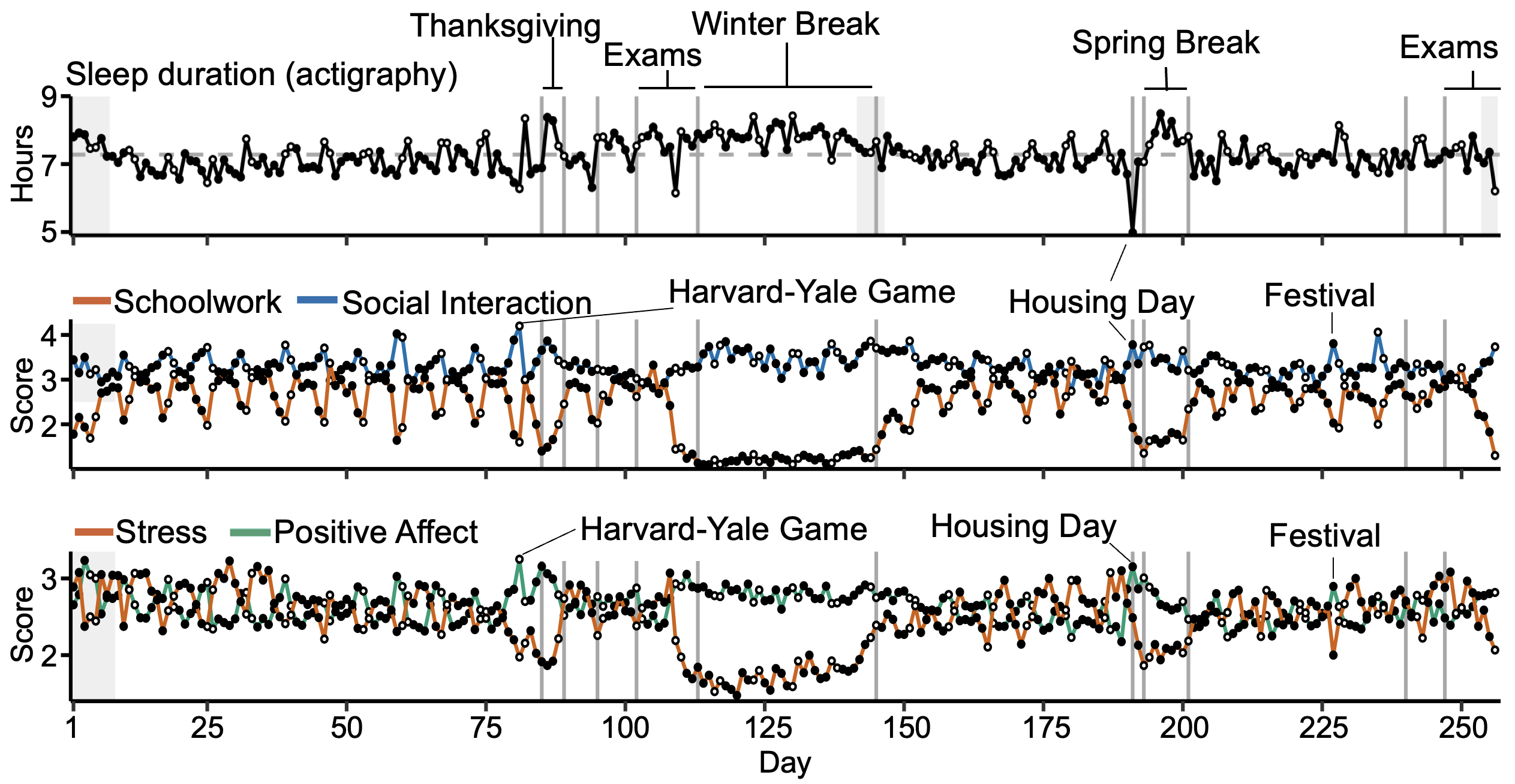Harnessing digital technology to uncover the dynamic effects of stress on emotions, behavior, and health
My doctoral research at Harvard University leveraged smartphones and wearable technologies to examine the impact of real-world stressors on individuals’ emotions, sleep, and social behavior, and how these dynamics shape health and wellbeing in the longer term.

Below are a few representative journal publications, posters with visual summaries, and general-audience features highlighting this research.
[For a full list of publications, check my Google Scholar profile].
Fluctuations in Behavior and Affect in College Students Measured Using Deep Phenotyping
Published in Scientific Reports, 2022 (DOI, pdf, poster summary)
Featured in Massachusetts General Hospital’s Advances in Motion (link)
This year-long study measured actigraphy-derived sleep and activity, and daily self-reported metrics of mood, academic and social behavior in a group of 49 first-year college students. We found that participants’ negative emotions, sleep patterns, and academic and social activity of varied substantially over the course of the year as well as between individuals. Cluster analysis identified three distinct student profiles with different affective and behavioral features, and varying levels of global psychological distress. While academics were a common stressor for all students, a vulnerable subgroup reporting greater frequency of social stressors went on to report the most psychological distress at the end of the year, suggesting dissociable effects of different stressors on mental health. We concluded that a focus on sustained interpersonal stress, relative to academic stress, might be especially helpful to identify students at heightened risk for psychopathology.
Within-Person Fluctuations in Stressful Life Events, Sleep, and Anxiety and Depression Symptoms During Adolescence: A Multi-Wave Prospective Study
Published in Journal of Child Psychology and Psychiatry, 2020 (DOI, pdf, poster summary)
Featured in The Association for Child and Adolescent Mental Health’s The Bridge (link, pdf)
This study leveraged a high-frequency longitudinal design to examine sleep as a potential mechanism linking stressful life events (SLEs) to increases in anxiety and depression symptoms over a one-year period. Thirty female adolescents aged 15–17 years completed 12 monthly in-laboratory assessments of exposure to SLEs and symptoms of anxiety and depression (n = 355 monthly assessments), and wore an actigraphy wristband for continuous monitoring of sleep for the duration of the study (n = 6,824 sleep days). We found that when adolescents experienced greater SLEs than was typical for them, they exhibited more variable sleep duration that same month as well as the following month. In turn, within-person increases in sleep duration variability predicted greater anxiety symptoms in the same month and mediated the association between SLEs and anxiety. These findings highlight sleep disruptions as a mechanism underlying the longitudinal associations between SLEs and anxiety symptoms, and suggest that interventions promoting sleep schedule consistency may help mitigate risk for stress-related psychopathology in adolescence.
